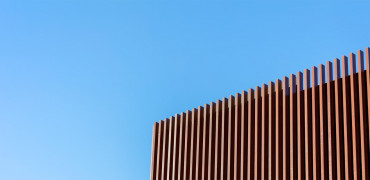I think we are all aware of the multiple threats that face our species due to climate change. But have we thought how these changes, rises, and severities will change how we live, or even where we live?
Hotter temperatures, severe storms, increased drought, to name just a few will all be considerations for the architects and home builders of the future.
New homes in fifty years’ time will need to be highly energy efficient, each home will need to capture energy, store it and distribute it.
Many existing homes are still likely to be with us in fifty years’ time, so they will need to be able to adapt to ensure they match requirements.
In the future, if we manage to avoid another pandemic, it’s pretty certain that we won’t have totally forgotten about this one, and how it forced us all to live differently.
Recent events and those to come will continue to challenge the way we both think and feel. As the human population soars, the potential for pandemics grows too.
Our homes will need to be adaptable and our spaces will need to be flexible and ready for change, in case we need to reconfigure and rearrange our homes!
I wonder what parts of the past we will leave behind?
Maybe we are all destined to belong to the 15-minute city?
Less noticeable technology
As technology advances, it will become more and more prevalent but less and less noticeable.
Imagine the possibility of walls and floors being impregnated with technology, to the point where the physical space can be changed, altered and adapted for eventualities.
If our interior design can be altered at the touch of a button, our desire to consume will be altered.
Landfill may no longer be a thing, wastage could become obsolete – something that needs to happen if we are ever to get to a truly circular economy.
Our often-unused formal spaces will probably become antiquated.
Who on earth could imagine a time with no visitors and permanently working from home? Yet this could well be the future.
A home or a workspace?
I think we will still need a kitchen or food storage and preparation area, but otherwise we will only really need a multipurpose workspace – a hierarchy that trumps the lounge!
Beds, even now, are not used solely for sleeping and for many people, they are an extension of the lounge with a TV on the wall and a smartphone to hand.
Even our furniture will need to have the ability to morph, and the items in our interior design are highly likely to be implanted with LED technology.
Will the paint brush even exist anymore except for creative pleasure?
Many believe that as technology becomes more efficient and effective, it will allow our homes to be more sustainable, healthy and almost passive.
The physical features of our homes, otherwise known as clutter, won't be seen.
Lightbulbs, fan heaters, plug sockets, shopping lists, photographs, will be left behind.
Surfaces will morph, visuals will change, air will be replaced and recycled. Life will be peaceful.
Networked homes
We are all happily networked together, with friends, family and work colleagues. What if our homes were too?
Communities currently disjointed and separate, could become networked communes. To a degree we are starting to see this with the growth of heat networks, reducing energy use and carbon emissions by sharing heat across an entire community.
Maybe we have spent decades growing our personal spaces and homes to simply regress back to communities in fifty years, to become smaller but to also be more connected, to share technology, to share our energy.
As we see shortages in land, labour, space, time and even fresh air, designers will concentrate their ideas, literally.
So, it will be interesting to observe our social networks, how both our buildings and our homes will become modular, how flexible will we become, how flexible will our spaces become.
Maybe we are all destined to belong to the 15-minute city?
Back to nature
Biophilia and the outside world and space will be key. As humans we benefit from a closer association with nature, so in this respect, will the future home be more like the past?
Sustainability will be essential, homes will be designed to prioritise green technologies, solar power, energy efficient HVAC and smart energy will be both integrated and will be the norm.
In conjunction with this, we will be health-centric, our air quality, temperature and lighting will be optimum. Highly technical but equally passive. Indoor green spaces, natural, breathable products. Think peace.
Not only will we be more sustainable but the advancement in materials and construction techniques will lead to both more sustainable and more efficient homes, less waste.
3D printing, prefabrication and modular materials, will all make building quicker.
And sustainability for both buildings and people, along with more respect for and better links with nature will place more focus on well-being.
Whichever way you look at it though, the future is exciting!
Kirsty Hammond is editor and publisher of Specifier Review




